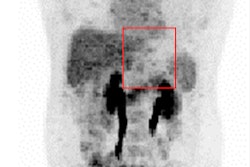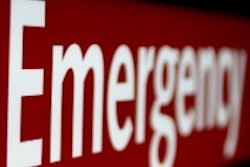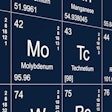
Multiple PET scans to evaluate post-treatment recurrence of lung and esophageal cancer do not improve two-year patient survival rates, which may mean the modality is overused, according to a study published online February 22 in the Journal of the National Cancer Institute.
Researchers from the University of Michigan found that patients who went to a hospital with high PET utilization were just as likely to survive for two years as patients who were scanned at facilities with low PET utilization.
"Our findings highlight patterns of variation in the use of PET to detect tumor recurrence without clear benefit in long-term patient outcomes," wrote the team led by Dr. Mark Healy from the Center for Healthcare Outcomes and Policy at the university.
The findings could also have ramifications for reimbursement policy from the U.S. Centers for Medicare and Medicaid Services (CMS), which limits patients to three PET scans after initial cancer treatment.
Healy and colleagues chose to study lung and esophageal cancers because of their similar poor prognoses and general anatomic location. One difference is that lung cancer is a relatively common malignancy, whereas esophageal cancer is much rarer.
"We felt that studying both would help to prevent detecting only disease-specific phenomena and establish if patterns of use are present at a hospital level," they wrote. "Because of differences in cohort size, we chose to perform all of our analyses separately for these two diseases" (JNCI, February 22, 2016).
Thus hospitals were divided into categories based on PET utilization using the total number of PET scans billed for each patient through CPT codes in both inpatient and outpatient settings. The researchers excluded all duplicate studies billed on the same date of service, so that only one scan would be counted toward a patient's total for a given date, even with a different CPT code.
The group found a total of 100,479 PET scans for lung cancer patients in 859 hospitals and 6,162 PET scans for esophageal cancer in 215 hospitals. The median age of patients for both cancers was 76 years. More than 40% (38,761) of lung cancer patients and 26% (1,167) of esophageal cancer patients had stage IV disease.
There were 1.03 mean PET scans per lung cancer patient and 1.39 mean scans per esophageal cancer patient, according to the researchers.
| No. of PET scans by cancer stage | |||||
| Stage | Lung | Esophageal | |||
| I | 27,810 (27.7%) | 1,108 (17.9%) | |||
| II | 7,032 (7%) | 1,569 (25.5%) | |||
| III | 28,779 (28.6%) | 1,416 (23%) | |||
| IV | 28,161 (28%) | 1,345 (21.8%) | |||
Regardless of cancer stage, 11,796 (11.7%) lung cancer patients received three or more PET scans, while 819 (13.2%) esophageal cancer patients received three or more scans.
For lung cancer patients, hospitals with the lowest PET utilization performed 0.05 scans per patient per year, while those with the highest utilization had 0.7 scans per patient per year, a statistically significant difference.
There was also significant variation for esophageal cancer. Hospitals with the highest utilization performed 0.97 scans per patient per year, compared with 0.12 scans for hospitals with the lowest PET utilization.
Most notably, higher PET scan utilization rates did not translate into improved patient two-year survival. Hospitals with the lowest PET utilization had an adjusted two-year survival rate of 29% for lung cancer patients, compared with 28.8% for facilities with the highest PET utilization.
For esophageal cancer patients, hospitals with the lowest utilization had a two-year survival rate of 28.4%, while those with the highest utilization had a rate of 30.3%.
Given the difference in PET utilization but similarity in two-year survival rates, the results suggest that potential overuse and efforts to decrease it are needed, according to the authors.
As noted earlier, CMS' current policy limits patients to three PET scans after initial cancer treatment.
"If this [CMS decision] is intended to curb overuse, it appears unlikely to do this," Healy and colleagues wrote. "However, this should be further studied once more data following this policy becomes available."
The authors also recommended that the study's findings be reviewed by hospitals that offer PET imaging to help them improve their practices.




















